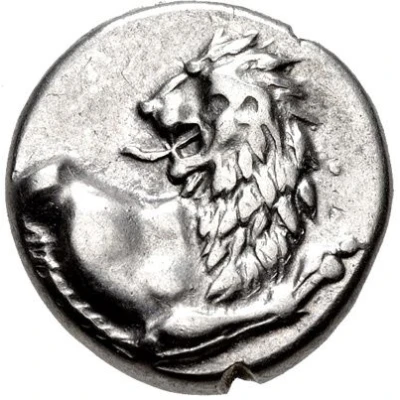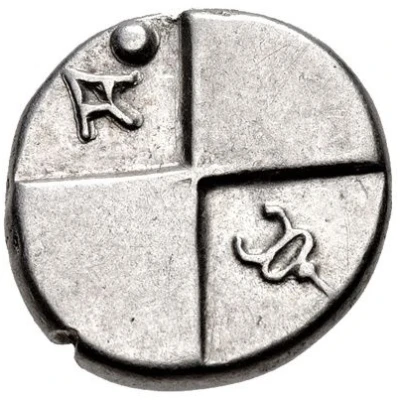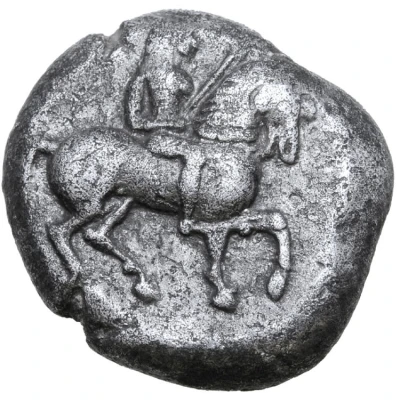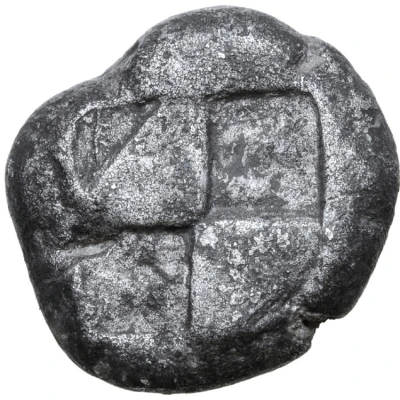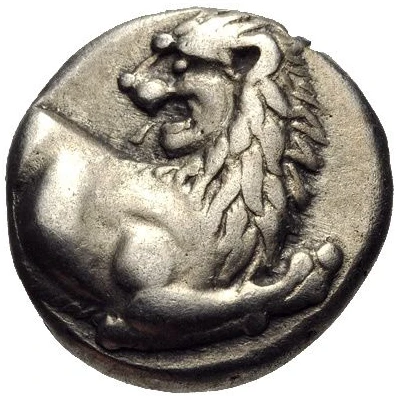
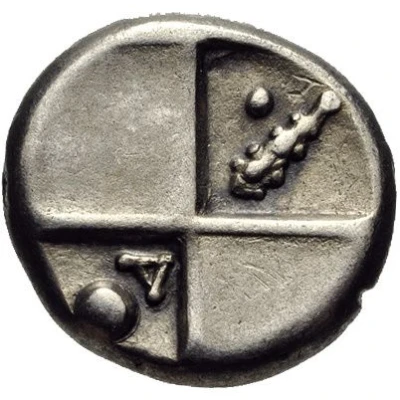

© Classical Numismatic Group, Inc.
Hemidrachm 386 BC - 338 BC
| Silver | 2.33 g | 11 mm |
| Issuer | Cherronesos (Thrace) |
|---|---|
| Type | Standard circulation coin |
| Years | 386 BC - 338 BC |
| Value | Hemidrachm (½) |
| Currency | Drachm |
| Composition | Silver |
| Weight | 2.33 g |
| Diameter | 11 mm |
| Shape | Round (irregular) |
| Technique | Hammered, Incuse |
| Orientation | Variable alignment ↺ |
| Demonetized | Yes |
| Updated | 2024-10-10 |
| Numista | N#427161 |
|---|---|
| Rarity index | 100% |
Reverse
Quadripartite incuse square with alternating raised and sunken quarters; pellet and club downward in upper sunken quarter; in lower sunken quarter, A above pellet.
Comment
McClean -; SNG Copenhagen -; cf. BMC 24 (monogram).
Interesting fact
The Hemidrachm coin from Cherronesos (Thrace) was used as a form of currency in the ancient Greek city-state of Cherronesos, which was located in the region of Thrace. The coin was made of silver and weighed 2.33 grams, which was a significant amount for a coin at that time. Despite its small size, the Hemidrachm was an important coin in the ancient Greek world, as it was widely used for trade and commerce. Interestingly, the Hemidrachm coin from Cherronesos (Thrace) features an image of a mythical creature called the Griffin, which was a symbol of protection and strength in ancient Greek mythology. The Griffin was often depicted as a creature with the body of a lion and the head and wings of an eagle, and it was believed to have the power to protect treasure and wealth. The image of the Griffin on the Hemidrachm coin from Cherronesos (Thrace) is a testament to the rich cultural heritage of the ancient Greek city-state and its beliefs and values.
